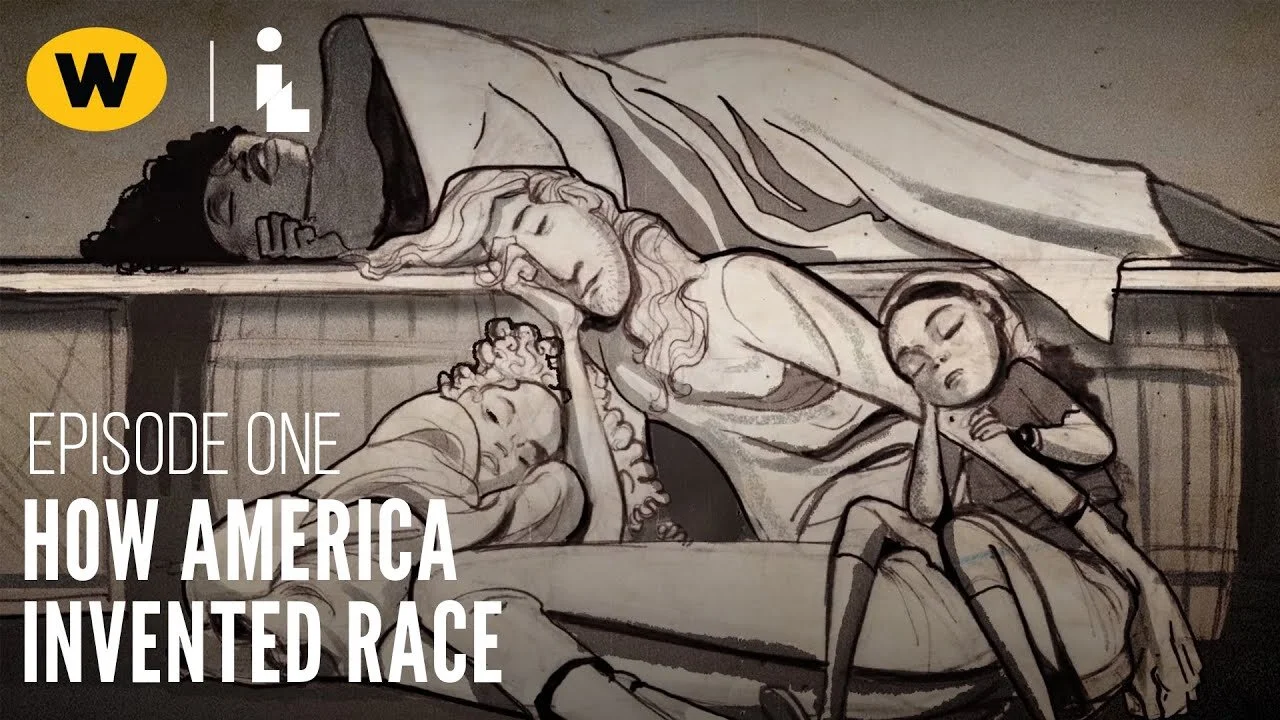
How are you Starting conversations About
race in your classroom?
It’s early fall, some schools have just begun their school year and many educators may find themselves looking for accessible ways to start important conversations about race, history and identity with their students.
In this blog post, Ida B. Wells Education Project educators will share some resources that have helped us open up conversations about race in our classrooms this year. Read, share and let us know: how are you starting conversations about race at your school this year?
Grounding:
Any educator seeking to tackle tough topics in the classroom must begin by getting to know their students and by building and reinforcing a strong sense of community in your classroom. This work begins on day 1 of the new school year.
For help in establishing a classroom environment in which students can have healthy, impactful and necessary conversations about race and history, see these guides from IBWEP educators:
Introduction to Establishing Community in the Classroom
By Martin Barrera, Board Member of the IBWEP
“We must remember that if we only talk about communities in resistance but never model it, our students will cling to the idea that these efforts are things of the past or the distant future, instead of options we have in the here and now. So we must do our best to carve out time to build our communities and practice holding space for conflict, vulnerability and empowerment so our students can feel inspired to do the same as they grow and progress in life.”
Introduction to Building Community Practices
By Elana Goldbaum, Member of the IBWEP Instructional Support Committee
It is very helpful for both the instructor and students to use community agreements as an active tool - name them when in use or when they need to be applied. A mistake is to draw up meaningful agreements but never go back to them.”
Starting with self
The simplest and most direct way to begin conversations about race in a diverse classroom is to give students space (and structure opportunities) to share their own experiences. Consider beginning each class with a quick write or bell-ringer question that inquires about their experiences or ideas. Vary the questions, start with light-hearted topics and questions that will allow students to get comfortable with the practice of writing, followed by discussing what they wrote in a think-pair-share format.
In the first week or two, aim for questions that allow students to get to know each other, build community and find common ground. Once you have established classroom norms and have a sense of individual and group dynamics in the room, you can try adding questions like: “Do you ever talk about race at home?” or “Have you ever experienced, witnessed or heard of a person being treated worse because of their skin color?” Emphasize that these are opportunities to explore how we feel, there are no wrong answers. Encourage students to listen to what their classmates have to say and use the opportunity to learn about people around them. Over time, these 10 minute warm up discussions can become a crucial part of building student’s awareness and empathy, as well as making your classroom into a place that students go to have meaningful conversations.
Many of us have a range of students in our classrooms, who vary greatly in their knowledge of academic English and history, or their ability to process text. These resources are short, accessible and can easily incorporate learning in multiple modalities. Check out the resources, along with practical tips for implementation in the classroom, below:
5 Short, Accessible Resources for Starting Conversations About Race in Your Classroom
-

Race: Power of an Illusion Documentary & Resources
This documentary series by California Newsreel is nearly 20 years old, but it still provides invaluable grounding and mythbusting when it comes to teaching basic facts about race. Educators can use the documentary series videos, or the many resources created to accompany the films can also be used independently.
If you’re looking for a way to jumpstart discussion on the concept of race, consider using their fact sheet Ten Things Everyone Should Know About Race. While some of the language may be outdated (i.e., the phrase “a Czech from a Chinese” was deleted from my handouts), it is an overall great conversation-starter to help students begin to process and understand key ideas about what race is and what it isn’t.
Suggested Teaching Activity: In pairs or small groups, have students read the handout Ten Things Everyone Should Know About Race. Ask them to identify: 1 fact that is confusing to them, 1 fact that is surprising to them and 1 fact that they think is the most important fact (with explanation). Extension: have students develop questions, research and find answers related to their “most confusing” fact. Have students create a poster or digital image to inform others about their “most important” fact.
-

How America Invented Race: The History of White People in America
Check out this short, powerful animated video by WORLD Channel.org & PBS Independent Lens.
Many of us progressive educators were raised on classic texts like Howard Zinn’s A People’s History of the United States or Ronald Takaki’s A Different Mirror, texts that taught us the significance of Bacon’s Rebellion as a major turning point in our national history of race and racism. Consider this 10 minute video to be a concise, accessible update or supplement to these sources, as storytellers use a gripping collage of rhyme, rhythm and animated visuals to tell the story of how the word “white” first appeared in US law. While the opening language is abrasive, my students were quickly drawn in by the raw emotions, artistry and timeless, crucial message. While students may have been uncomfortable in the opening moments of the film, in small-group discussion afterward they were able to process the short films message of unity and ultimately, hope for the future.
Suggested teaching activity: Watch the video as a whole class and have students unpack major ideas and themes afterwards via analytical discussion in small groups. Sample discussion question: “According to this video, did white and Black people ever get along in the early colonies?” My students were surprised by what they learned in this video and eager to discuss. Set firm discussion guidelines and prepare for meaningful, energized conversations about race.
-

Latinos Get Their DNA Tested by Pero Like via Buzzfeed & A Conversation with Latinos About Race via The New York Times.
Check out these two videos: Latinos Get Their DNA Tested by Pero Like via Buzzfeed and A Conversation with Latinos About Race via The New York Times.
In Los Angeles public schools, 73.4% of students identify as Hispanic or Latino/a/x. Traditionally taught narratives on race in the US can reduce the conversation to Black and white, leaving many Latino/a/x youth unsure of how to enter this conversation. One way that I’ve addressed this is by beginning my US History class with some discussion of the Spanish empire and the “meeting of 3 people” (European, Indigenous & African) that created “new people” in the Americas (as described in 500 Years of Chicana Women’s History by Elizabeth Martinez).
These lessons incorporate a variety of scholarly resources but for this post, I’d like to recommend two short videos that have sparked great conversations and made a lasting impression on my students. Latinos Get Their DNA Tested is a great video for opening the conversation on race and heritage in the Americas with some laughter, as students can see people who look like them discover the story of 3 worlds meeting in their own DNA. Follow up with this heavy-hitting short film, A Conversation with Latinos About Race an Op-Doc by NYT. This film features Latin American people of many colors describing a range of social issues that they deal with today, from colorism, to the struggle to fit in and issues around “talking white.” I use this film in conjunction with lessons introducing concepts and definitions like: white supremacy, colorism and the Sistema de Castas.
Teaching Activity: View videos as a whole class. Then use think-pair-share writing or small group discussion. Sample questions: 1. Did you find anything funny, interesting, surprising or confusing in this video? 2. Do you relate to anything in this video? 3. How might anything said in this video connect to history that we’ve been studying?
-

Black in Latin America documentary series by Henry Louis Gates & PBS
As shocking as it may be to many, Los Angeles public schools have a history of race riots. Ask anyone who has attended or taught at a large Los Angeles high school and chances are, they can describe to you a day when racial tensions between African American and Latino/a/x students erupted into violence. With this context in mind, I prioritize teaching for Black and Brown unity in my classes and I’ve found the PBS series “Black in Latin America” to be enormously useful in this endeavor. In this series Henry Louis Gates not only brings to light African contributions to various Latin American cultures and histories, he also illuminates a history of inter-mixing coupled with anti-Black racism. Gates approaches this as a mystery and students are drawn in as he explores colorful locales throughout Latin America, highlighting the beautiful culinary, linguistic and musical traditions of Africans that have become integral to different Latin American cultures. These videos are affirmational and joyful, both Brown and Black students can view with a sense of pride in what their ancestors were able to build in the new world.
Teaching Activity: Show the first 15 or so minutes of Episode 2: Mexico and Peru: The Black Grandmother in the Closet. Ask video questions and lead think-pair-share discussion. Next, offer students further reading on topics addressed in the video segment. For example, I offered students articles on the African roots of the song La Bamba, the Sistema de Castas and Gaspar Yanga.
-

#HonorNativeLand
“Prior to European arrival, who inhabited the land that we stand on?” Ask your students this question early in your classes and prompt them to evaluate what they already know and crucially, what they don’t know, about Indigenous people and the true history of this land. Many of my students could not identify the Tongva people, traditional stewards of the land on which our high school was built. Students were also shocked to learn how many common place names that we use every day, such as “Malibu”, “Cahuenga” and state names like “Arizona” and “Utah”, are derived from Indigenous names. Encourage students to read, research and learn more about local Indigenous history, consider field trips and inviting Indigenous activists as guest speakers. Use the video #HonorNativeLand to start a conversation about Land Acknowledgements and why it is important to acknowledge the Indigenous stewards of the land that we now enjoy.
Teaching Activity: Have students research local Indigenous groups and write Land Acknowledgements, for standards alignment use Common Core Informative Writing Standards. Extension: Introduce students to some of the controversy around Land Acknowledgements, ask students what else could be done to redress the historic theft of Indigenous land.
We hope you found these tips helpful!
What are your best practices? Let us know how you’re starting conversations about race, history and identity in your classrooms!
Want more ideas on teaching about crucial issues of race and racism? Check out this Twitter thread where Peta Lindsay breaks down a lesson analyzing the controversy around the 1619 Project:


